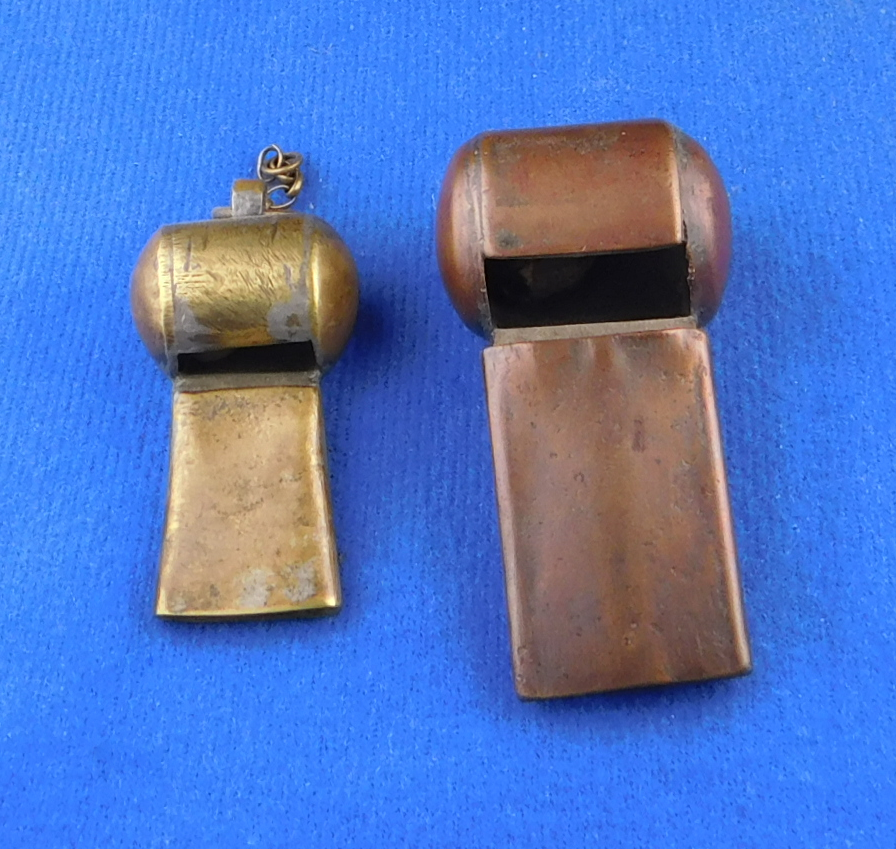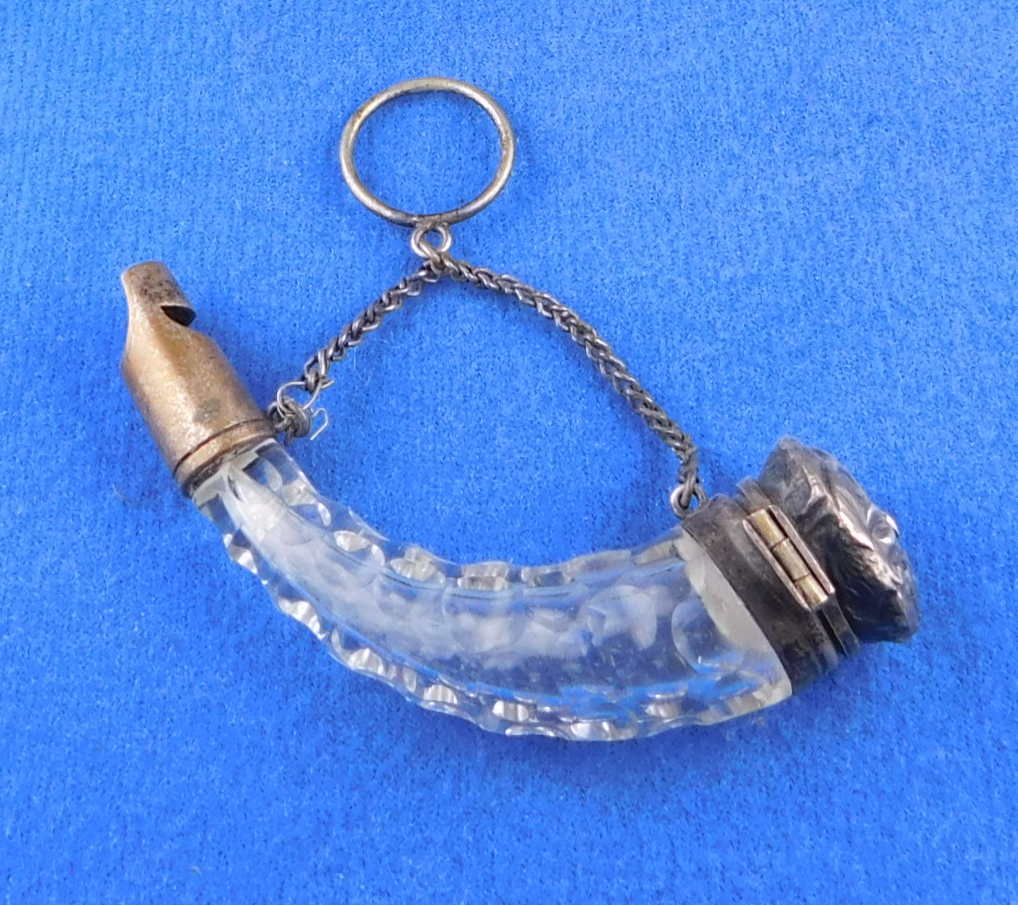Spotlight > Whistle Categories > Round > 116
Whistory
As whistle research continues and countries open through the internet, we see new areas of whistle studies. This article draws attention to eastern European military round whistles, particularly from Russia. These are very heavy cast metal whistles dating as far back as the Crimean wars, circa 1850’s. Over many decades the overall design remained the same, with many variations within.
Ground forces used whistles to signal. Sentry’s could call guards, in military courts common orders could be transmitted through a special pipe with a whistle. They were standard issue with special pockets on the sword belt or on the field uniform.
The nature of their production reveals why such variety. Prior to 1900 factories of large size down to even village size, were the sources for these whistles. Each site had their own production techniques and turned out somewhat different shapes and quality. Large factories from cities like Kolchugino, Langezipen, Siversky, would only be checked later in history by military quality controls. Smaller factories were called Artels could be as small as 5 workers in small villages. An artel is still a factory, but the opposite of mass production.
An artel was a general term for various cooperative associations in the Russian empire and the Soviet Union between 1860s through the 1950s, semi-formal associations for fishing, commerce, thieves etc. They could be far from home, living in communes. Payment was split equally, perhaps seasonally and this grew to more formalized legal enterprises.
So, an artel was a traditional folk institution in Russia and rarely had codified rules. You could start working at the age of 17. Everyone working there was collectively liable for all the operations in the artel.
A Russian Proverb:
It may be easy to complete a simple task on your own. But when you undertake a complex assignment it’s hard to manage it without a helper. That is the reason why Russians commonly say that 
The proverb describes the benefits of teamwork or belonging to a group of like-minded people. It means that a person can achieve better results when working with a helper or as a part of the team. The first word  comes from the noun
comes from the noun  (artel) which was used in imperial Russia and the Soviet Union as a term for a cooperative of workers or producers.
(artel) which was used in imperial Russia and the Soviet Union as a term for a cooperative of workers or producers.
From this type of production came the military type round whistles we are studying today. Occasionally a whistle is found stamped on the upper roundish top (similar to the UK Porteous tops) with what is called a stigma. These are always Cyrillic. It is thought to be the manufacturers, private factories and small plants. Large factories made munitions, larger orders and items, also whistles, while small factories made belt buckles, flasks, also whistles.
Matching up the stigmas to certain factories can be difficult. However, one glass water flask had on it the letters  the brand
the brand may correspond. Other items such as belt buckles can also be used in the same way and so on. This of course will be a subject for continued study and archeology.
may correspond. Other items such as belt buckles can also be used in the same way and so on. This of course will be a subject for continued study and archeology.
Whistology
Materials:
iron
brass
nickel silver
pot metal
bronze
Stigmas known:
Russian alphabet consists of 33 letters divided into 10 vowels, 21 consonants and 2 letters which do not designate any sounds. Each letter can be either capital or small.
NOTE: Do not confuse Russian letter names with sounds designated by those letters
Here is the typical field dug whistle one would find front back and center.
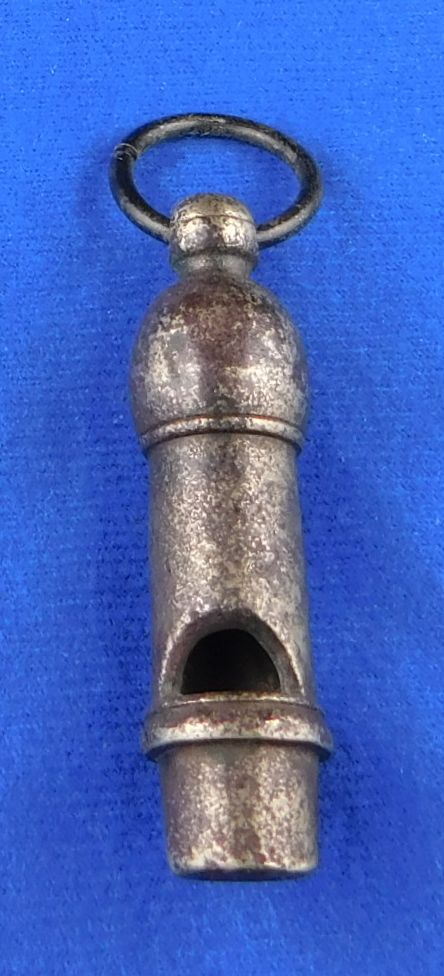
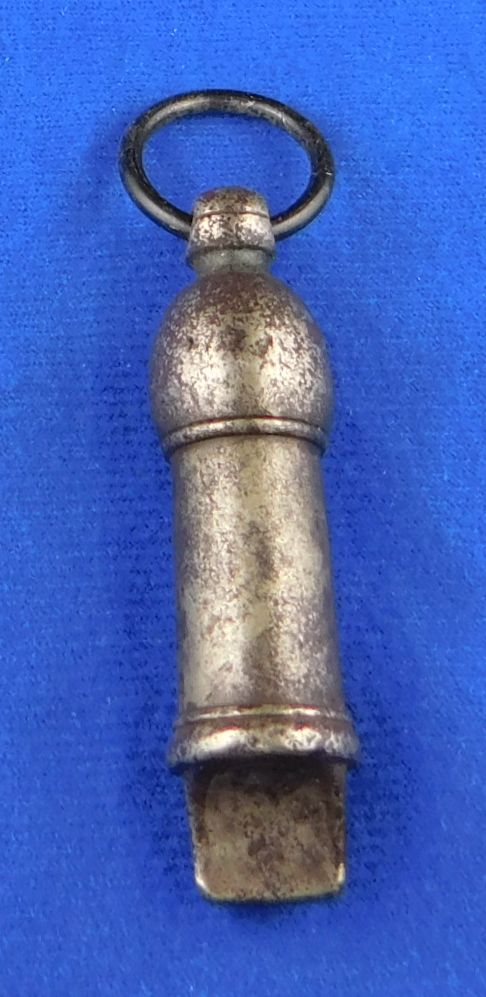
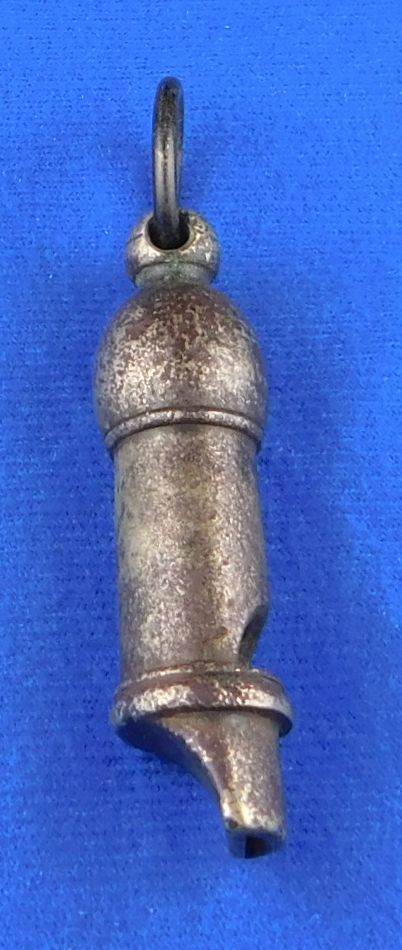
Typical top always has a ring around the knop.
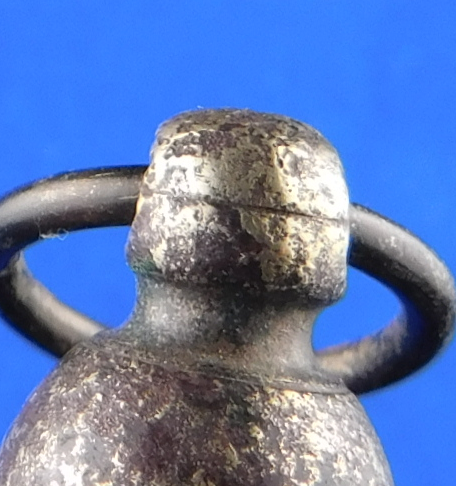
Here are three closeups of the stigmas when found. They are always front or back of the whistle top.
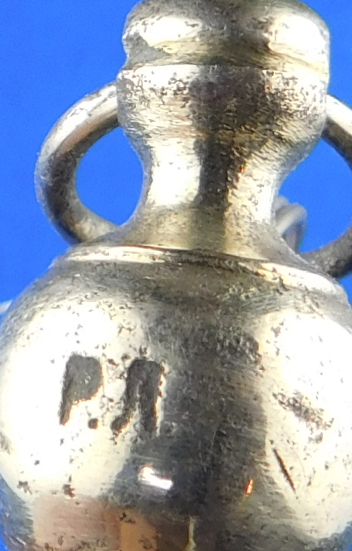
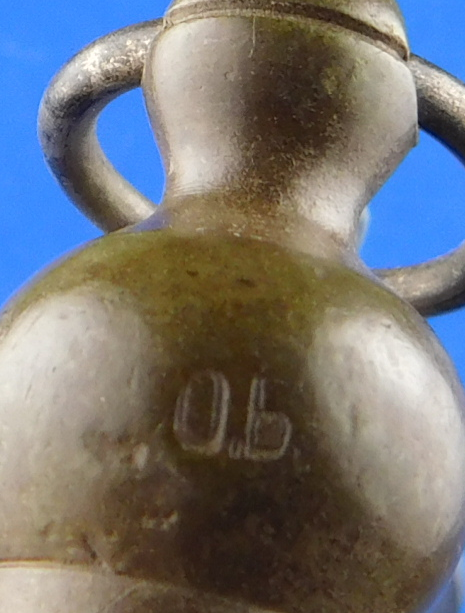
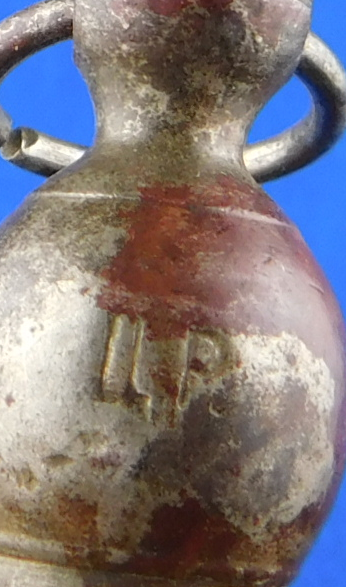
Next, we compare some brass materials of different qualities…
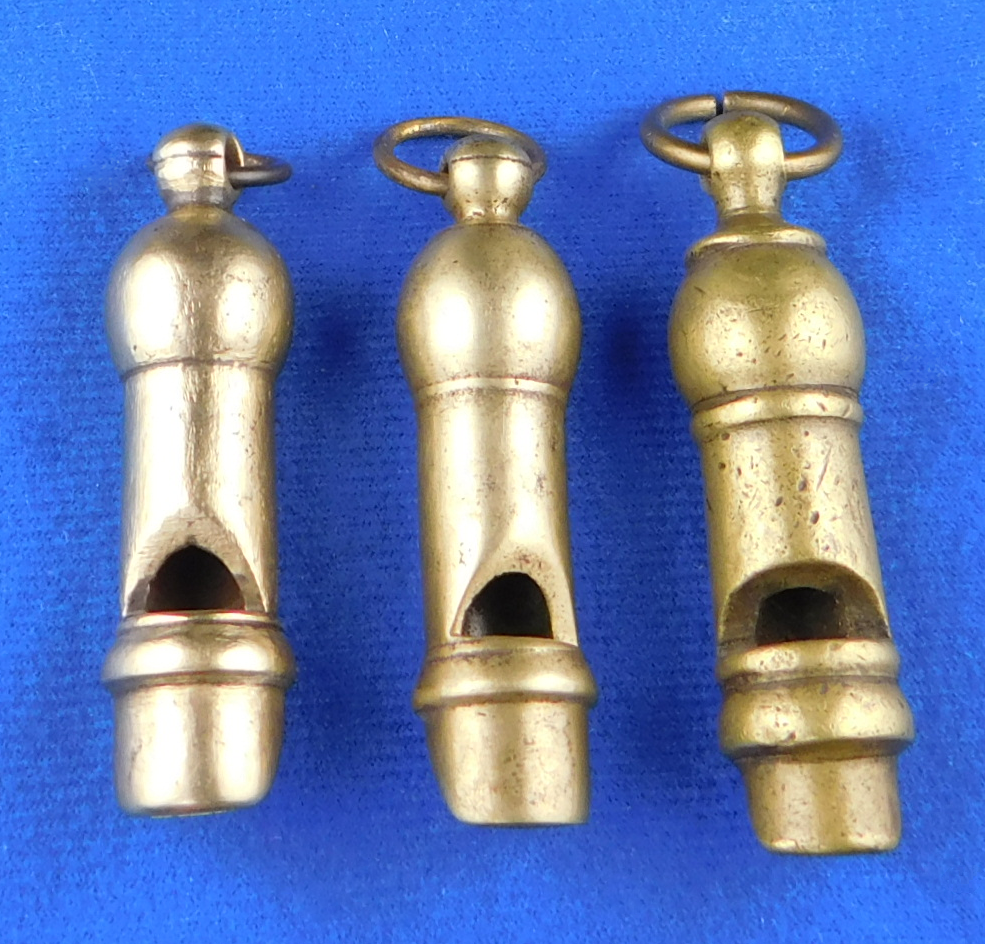
Nickle silver was used often. Nothing is known if different levels of the military were issued different quality whistles?
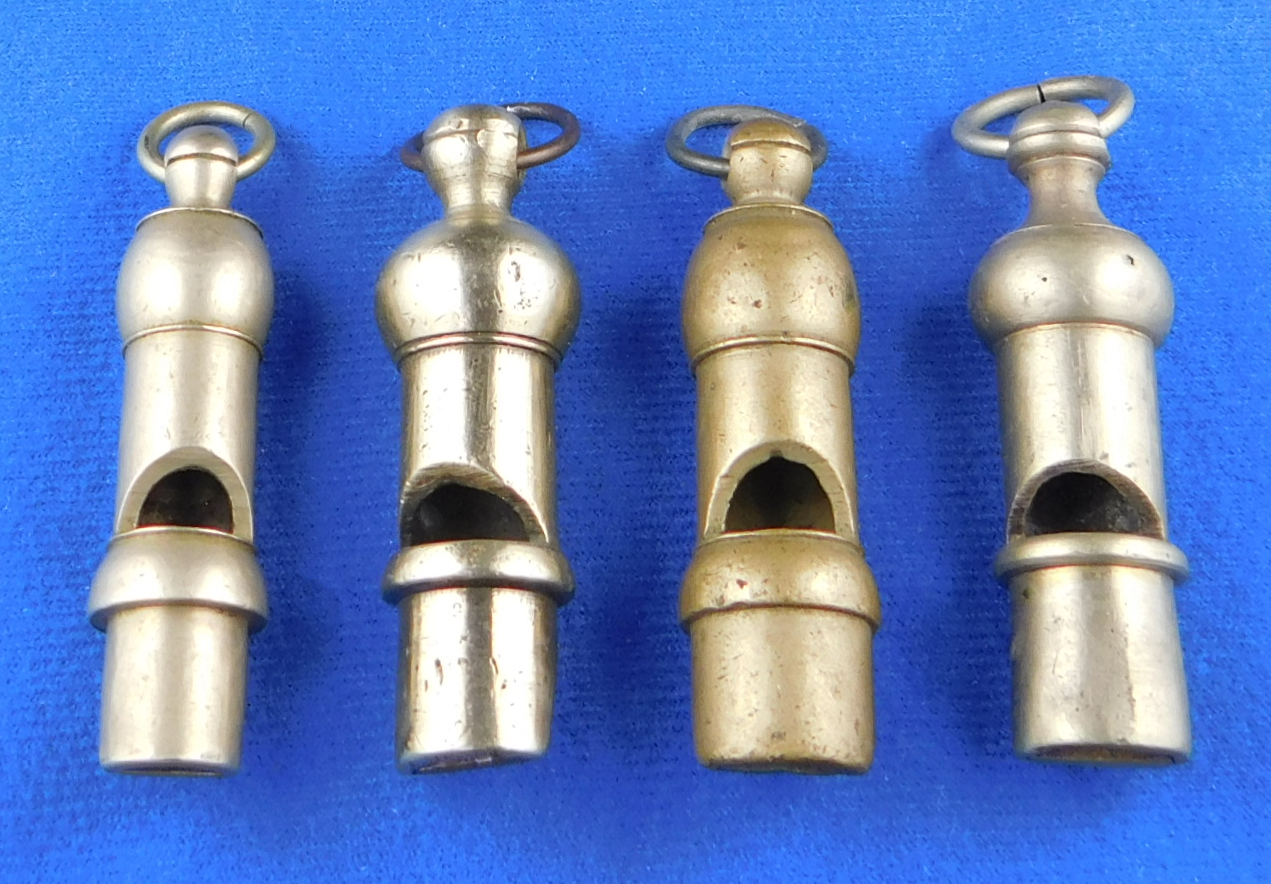
Note the differences in the top round sections.
Lastly differences can be seen on the mouthpieces, including the ridge below the window and/or the length of the actual mouthpiece.
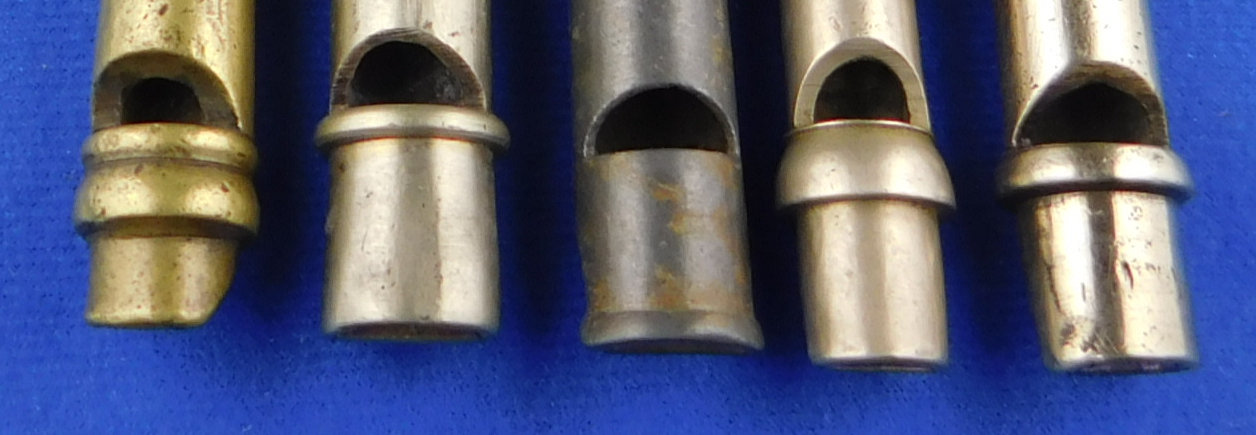
TWG
Posted November 5, 2020
Bibliography:
https://www.definitions.net/definition/artel
https://www.vocabulary.com/dictionary/stigma
http://www.silvercollection.it/dictionaryartelsMO.html
https://link.springer.com/chapter/10.1007/978-1-349-20646-9_21
http://masterrussian.com/blalphabets.html
Master Russian.com
reverse context
Source Encyclopedic Dictionary F.A. Brockhaus and I.A. Efron (S.-Pb .: Brockhaus-Efron. 1890-1907)
Land Commune and Peasant Community in Russia
